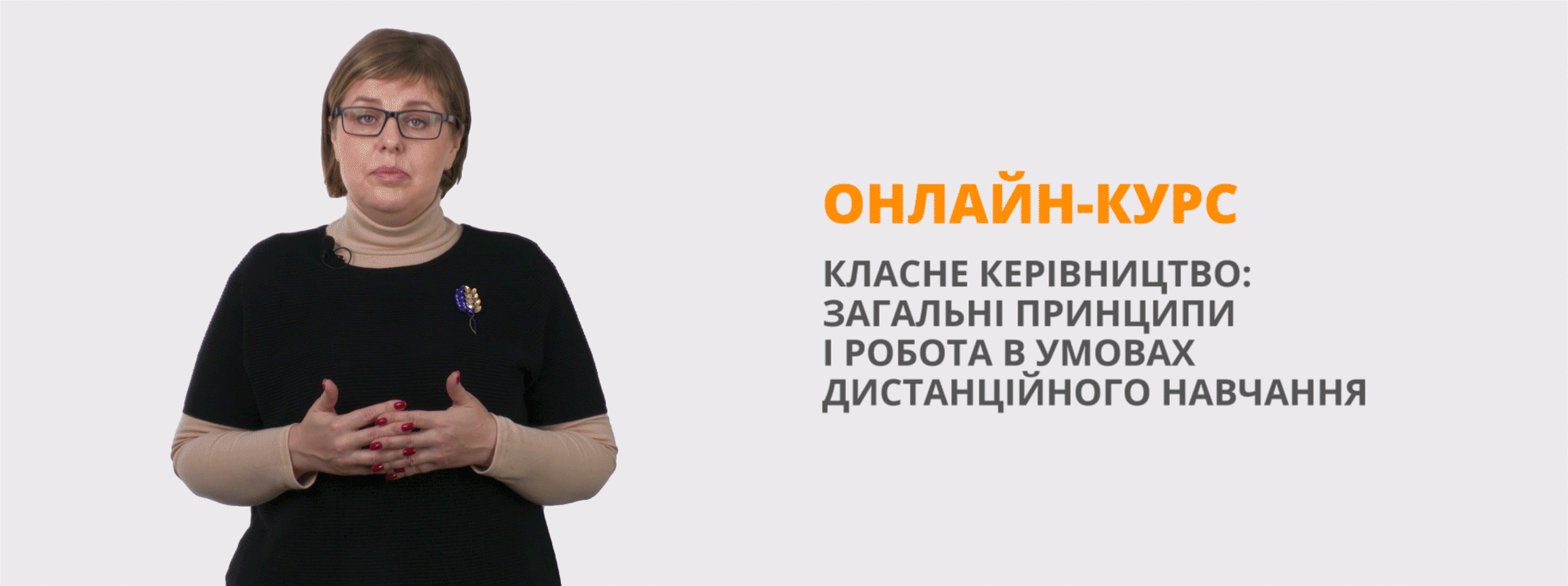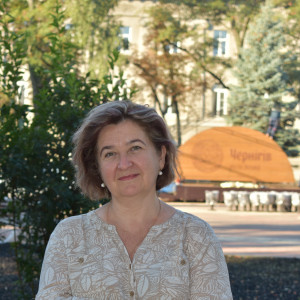Тести до "English'10" Карп'юк О.Д.
- 10 клас.docx docx
- Ключі до тестів НМК 10.docx docx
- Пояснювальна записка 10.docx docx
People and Relationship (Unit 1)
- What is the strongest factor that influences our personality?
- the date of birth; b) mood; c) the position in the family; d) bringing up.
- Who gets maximum attention in the family?
- the oldest children; b) mother; c) father; d) pets.
- How are the oldest children characterized?
- irresponsible; ) lazy; c) happy; d) responsible, bossy, sometimes aggressive.
- What are the middle children?
- disobedient; b) independent and competitive; c) funny; d) responsible.
- What children are sociable and like being with people, often jealous of their brothers and sisters and can be moody?
- the only child; c) the middle children;
- the oldest children; d) the youngest children.
- If a child is the youngest in the family, he or she is…..
- very charming, affectionate and quite relaxed;
- bossy; c) moody; d) selfish.
- The only children in the family are…..
- sleepy; b) hard working; c) organized; d) often spoilt.
- What people like giving orders?
- charming; b) disobedient; c) sensitive; d) bossy.
- Competitive people always …..
- want to win; c) get angry and like fighting;
- are people you can trust; d) want to be successful in life.
- Do gossipy children have a lot of friends?
- Yes, they do. b) No, they do not. c) Sometimes.
- Why do some children have so many friends?
- They are selfish. c) They are jealous.
- They are envious. d) They are reliable.
- A close friend is someone who…..
- is selfish; b) you are confident in; c) get angry luckily; d) like giving orders.
Choose the Career (Unit 2)
- An accountant …..
- works with people;
- often gathers financial reports;
- is responsible for the safety of documents and files;
- never has vacations.
- Journalists should …..
- follow gossips; c) participate in debates;
- make reports about weather; d) inform the society about events.
- IT skills are…..
- needed for everyone; c) ability to work with Information Technology;
- ability to cook; d) not actual nowadays.
- What business makes money for finding jobs for others?
- an employment agency; c) teacher’s training course;
- primary school preparation; d) advertising office.
- A skill to make things using woods is needed to work as …..
- a bricklayer; b) a mechanic; c) a carpenter; d) an electrician.
- It is an occupation in which special education or training is required.
- occupation; b) profession; c) trade.
- It is a skilled occupation especially in handicraft.
- occupation; b) profession; c) trade.
- People who work for an organization, especially for business are called…..
- staff; b) colleagues; c) bosses; d) sellers.
- Liza has an ….. of working as an interpreter for seven years.
- application; b) experience; c) Master’s Degree; d) salary.
- After getting a Bachelor’s Degree I’m going ….. for a position of a personnel manager.
- to ask; b) to request; c) to work; d) to apply.
- My older brother Denis is a manager. His job is …..
- old-fashioned; b) well-paid; c) not popular; d) not necessary.
- My cousin Kelly is an interpreter. She gets a good…..
- food; b) help; c) attitude; d) salary.
Why Go to School? (Unit 3)
- Knowledge is not just information but the organization and interpretation of information which can be achieved through a good school …
- curriculum; b) system; c) director; d) year.
- Teamwork and games in class can help students define themselves and the way they relate to …
- teachers; b) others; c) the head teacher; d) parents.
- Schools, … the Internet, provide young people with knowledge.
- unlike; b) besides; c) without; d) with.
- School is the place where students can … their skills in social relationships.
- help; b) develop; c) find out; d) strengthen.
- After the home, …. is the main social environment for young people.
- dance club; b) tennis court; c) a party; d) school.
- While the Internet provides information, schools can provide with …
- friends; b) knowledge; c) social work; d) working experience.
- … is a person who has finished a university and has a degree.
- Master; b) Bachelor; c) graduate; d) Professor.
- … is a school paid by the government which gives free education.
- primary; b) state; c) secondary; d) boarding.
- … is a school for older children from 11 to 18.
- primary; b) state; c) secondary; d) boarding.
- … is a non-government school where you have to pay.
- comprehensive; b) compulsory; c) infant; d) private.
- … is a school for young children from 4-11.
- comprehensive; b) private; c) infant; d) primary.
- …is a school where pupils live, eat and sleep.
- secondary; b) state; c) boarding; d) infant.
National Cuisine (Unit 4)
- Breakfast for an Englishman is generally a ….. meal than they have on the Continent.
- bigger; b) great; c) not important; d) more important.
- The main meal of the day is called …..
- dinner; b) lunch; c) high tea; d) snack.
- If dinner is eaten in the evening(about 7 p.m.), the midday meal is called …..(about 1 p.m.).
- dinner; b) lunch; c) high tea; d) snack.
- It is well-known that every national ……has got its famous specialties.
- tradition; b) culture; c) history; d) cuisine.
- The evening meal in Britain goes under various …..
- names; b) forms; c) colours; d) music.
- The Christmas pudding is always full of ….. .
- raisins; b) nuts; c) chocolate; d) surprises.
- ….. means to cook something slowly in liquid.
- to fry; b) to slice; c) to stew; d) to bake.
- Food which is kept very cold is…..
- raw; b) cold; c) wet; d) frozen.
- This tea is very …... You’ve put too much sugar in it!
- sweet; b) hot; c) tasty; d) strong.
- People on a diet often try to eat ….. food.
- not tasty; b) low-fat; c) little; d) nutritious .
- She doesn’t like Mexican food because it is too …..
- unhealthy; b) expensive; c) spicy; d) tasty.
- We often buy …..food on Fridays – either Chinese or Indian.
- takeaway; b) new; c) fast; d) prepared.
Communication Technologies (Unit 5)
- It’s a website where a user creates and regularly updates a journal that reflects the views of the writer.
- a blog; b) PC; c) offline; d) online.
- How can a company offer computer users the opportunity to order and pay for goods and services using their cards on the Internet?
- in a shop; b) through a TV shop; c) through a bank ; d) through e-commerce.
- A computer is a machine which consists of …..
- input and output; c) many metal components;
- hardware and software; d) screen and printer.
- Computers reduce ….. used in an office.
- work time; b) the amount of paper; c) people’s resource; d) pleasure.
- This device allows the user to select objects on the display screen.
- Windows; b) pointing device; c) desktop; d) HTML.
- …. is copying information from a website to your own computer.
- downloading; b) surfing the Net; c) the Net; d) e-mail.
- One of the most important input devices is the …..
- microphone; b) keyboard; c) programmed; d) enter.
- Yesterday I switched on the computer and entered my…..
- screen; b) name; c) phone number; d) password.
- It allows you to search the WWW and look at webpages(e.g. Netscape Navigator or Microsoft Internet Explorer).
- e-mail; b) modem; c) web browser; d) phone line.
- It is a secret word you have to type to enter a computer system.
- password; b) username; c) data; d) website.
- When you are moving from one document or website to another in order to find information you are …..
- writing an e-mail; c) playing online games;
- surfing the net; d) updating your journal.
- The potential uses of computers are …..
- definite; b) indefinite; c) infinite; d) great.
Is the Earth in Danger? (Unit 6)
- What natural disasters are becoming more frequent in Ukraine?
- floods and storms; b) floods and earthquakes; c) tsunamis;
- tornadoes.
- ..… are rain drops that have formed together into ice.
- hailstorms; b) heat wave; c) floods; d) a tsunami.
- Some birds and animals are …..because people cut down the trees.
- in cages; b) in forests; c) in zoos; d) in danger.
- The land has a great role in …..
- outer space; b) cyber space; c) our life; d) the books.
- Don’t allow anybody to ….. our territory.
- protect; b) occupy; c) demonstrate; d) pollute.
- ….. is the point in which a volcano is active and releases its power.
- a landslide; b) a volcanic eruption; c) a blizzard; d) a draught.
- ….. is a severe winter storm condition characterized by low temperatures, strong winds and heavy blowing snow.
- a wildfire; b) a draught; c) a blizzard; d) a landslide.
- If there is a lot of rain, or very strong winds, ….. can happen.
- fires; b) avalanches; c) danger; d) floods.
- Every day we use ….. made from wood.
- water; b) paper; c) air; d) food.
- Our planet suffers from …..
- pollution; b) animals; c) plants; d) children.
- Every year the Earth loses 20 million acres of tropical….
- rainforests; b) birds; c) water; d) rivers.
- The future is in our …..
- dreams; b) plans; c) hands; d) discussions.
The World of Painting (Unit 7)
- The development of art of painting in Ukraine is referred to …
- portrait painting; c) landscape painting;
- icon-painting; d) impressionism.
- Icon painters didn’t depict …
- Jesus Christ; b) landscapes; c) the Virgin; d) saints.
- Portrait painting was strongly influenced by …
- landscape painting; c) cubiform futurism;
- Taras Shevchenko; d) the icon tradition.
- Many Ukrainian painters were attracted to the new Academy of Arts in …
- St. Peterburg; b) Moscow; c) Kyiv; d) Odessa.
- Ukrainian art of the middle of the 19th century was closely connected with the name of …
- Taras Shevchenko; c) Ivan AIvazovskyi;
- c) Mykola Myrashko; d) Mykola Pymonenko.
- Present-day Ukrainian art is developing in harmony with …
- icon-painting; b) world art; c) cubiform futurism; d) abstraction.
- It is a picture that you have in your mind.
- mosaic; b) portrait; c) frescos; d) image.
- It is the main subject or idea in a piece of painting.
- image; b) genre; c) abstraction; d) theme.
- It is picture representing a scenery of nature of countryside.
- a fresco; b) a piece; c) a landscape; d) a scene.
- This word is used as a general term meaning “work”, “picture”.
- a sitter; b) a still life; c) painting; d) a portrait.
- It is a picture on a wall or ceiling.
- an icon; b) a fresco; c) a portrait; d) a seascape.
- It is a person who belongs to a certain group of people.
- an artist; b) a representative; c) a painter; d) a master.
Do You Like Sports? (Unit 8)
- …... is a water sport you do in the sea.
- surfing; b) motor-racing; c) football; d) boxing.
- ..…. is an extreme sport that is fast and dangerous.
- motor-racing; b) arm-wrestling; b) golf; d) basketball .
- Players do it before they start playing.
- warm up; b) get feet; c) train; d) athletic track.
- The people who watch a sport are …..
- captains; b) coach; c) referee; d) spectators.
- This is a game peculiarly associated with England.
- golf; b) cricket; c) boxing; d) skiing.
- ….. is played in the countryside and consists in driving a small ball towards and into holes.
- golf; b) cricket; c) boxing; d) skiing.
- Sports fans come to the stadium …..
- to learn their favourite poems by heart; c) to eat chips;
- to attract customers ; d) to support favourite players.
- You may not ….. the ball with your hands when playing football.
- watch; b) touch; c) buy; d) wash.
- There are many tennis clubs in England but every town provides tennis ….. in public parks.
- courts; b) grounds; c) rounds; d) sets.
- Professional sports people have to do it every day.
- dance; b) warm up; c) get feet; d) train.
- My sports teacher told me that I had ….. for playing tennis and that I should practice it more thoroughly.
- development; b) research; c) a skill; d) decisions.
- Recently I’ve started going to the gym three times a week in order to keep …. .
- touch; b) stay; c) form; d) fit.
Ключі до тестів НМК «Enlish’10» Карп’юк О.Д.
Unit 1
1c 2a 3d 4b 5c 6a 7d 8d 9a 10b 11d 12b
Unit 2
1b 2d 3c 4a 5c 6b 7c 8a 9b 10d 11b 12d
Unit 3
1a 2b 3a 4b 5d 6b 7c 8b 9c 10d 11d 12c
Unit 4
1a 2a 3b 4d 5a 6d 7c 8d 9a 10b 11c 12a
Unit 5
1a 2d 3b 4b 5b 6a 7b 8d 9c 10a 11b 12b
Unit 6
1a 2a 3d 4c 6d 6b 7c 8d 9b 10a 11a 12c
Unit 7
1b 2b 3d 4a 5a 6b b7d 8d 9c 10c 11b 12b
Unit 8
1a 2a 3a 4d 5b 6a 7d 8b 9a 10d 11c 12d
Пояснювальна записка
Дана розробка пропонує до уваги тести для експрес- перевірки загального рівня засвоєння учнями інформації з певної теми («People and Relationship”, “Why Go to School” etc) по закінченню її вивчення. Запитання охоплюють навчальний матеріал, викладений у НМК “English’10” (рівень стандарту для загальноосвітніх навчальних закладів) Карп’юк О.Д., та деякі запитання для перевірки загальної ерудиції стосовно теми, що вивчалася.
За наявністю варіантів відповіді подані тести закритої форми з вибором однієї правильної відповіді та відкритої форми( на доповнення, з короткою відповіддю).
Формулювання відповідей дозволить оцінити не лише рівень володіння навчальним матеріалом, але й перевірити лексичні, граматичні та правописні навички учнів.
Окремо подані ключі до тестів.


про публікацію авторської розробки
Додати розробку

-

Балюнова Свiтлана Анатоліївна
12.05.2021 в 19:36
Гарні корисні тести, і не має бути все оригінальним! Ваші тести полегшили мені роботу! Дякую!
Загальна:
4.3
Структурованість
5.0
Оригінальність викладу
3.0
Відповідність темі
5.0
-

Посівнич Олена Миколаївна
06.12.2020 в 16:05
Загальна:
5.0
Структурованість
5.0
Оригінальність викладу
5.0
Відповідність темі
5.0
-

Лысенко Марина
23.06.2020 в 21:24
Загальна:
5.0
Структурованість
5.0
Оригінальність викладу
5.0
Відповідність темі
5.0
-

Музичук Ірина Володимирівна
17.06.2020 в 11:25
Загальна:
4.7
Структурованість
5.0
Оригінальність викладу
4.0
Відповідність темі
5.0
-

Піскова Олена
29.05.2020 в 11:41
Загальна:
4.7
Структурованість
5.0
Оригінальність викладу
4.0
Відповідність темі
5.0
Показати ще 2 відгука